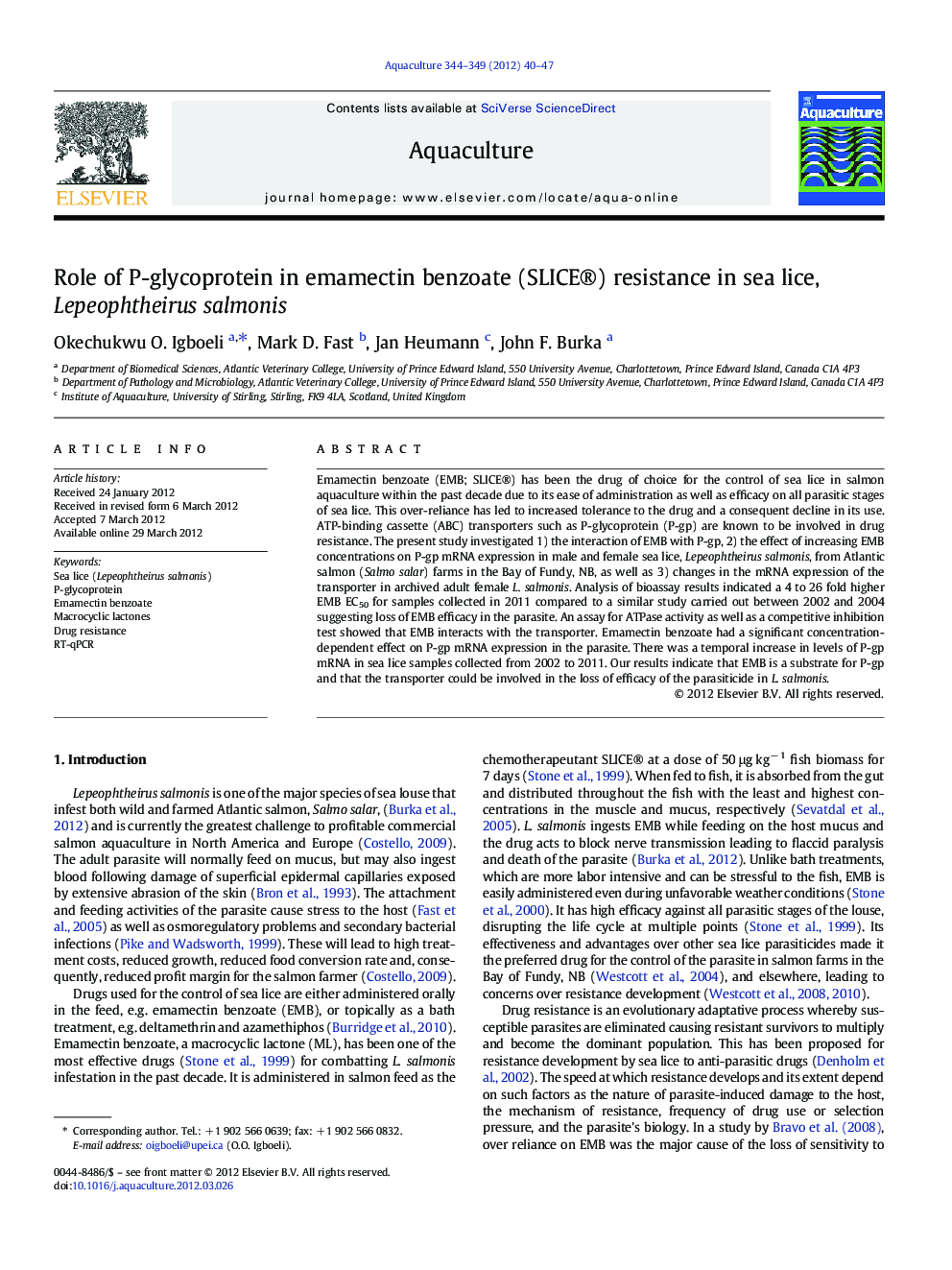| Article ID | Journal | Published Year | Pages | File Type |
|---|---|---|---|---|
| 2422627 | Aquaculture | 2012 | 8 Pages |
Emamectin benzoate (EMB; SLICE®) has been the drug of choice for the control of sea lice in salmon aquaculture within the past decade due to its ease of administration as well as efficacy on all parasitic stages of sea lice. This over-reliance has led to increased tolerance to the drug and a consequent decline in its use. ATP-binding cassette (ABC) transporters such as P-glycoprotein (P-gp) are known to be involved in drug resistance. The present study investigated 1) the interaction of EMB with P-gp, 2) the effect of increasing EMB concentrations on P-gp mRNA expression in male and female sea lice, Lepeophtheirus salmonis, from Atlantic salmon (Salmo salar) farms in the Bay of Fundy, NB, as well as 3) changes in the mRNA expression of the transporter in archived adult female L. salmonis. Analysis of bioassay results indicated a 4 to 26 fold higher EMB EC50 for samples collected in 2011 compared to a similar study carried out between 2002 and 2004 suggesting loss of EMB efficacy in the parasite. An assay for ATPase activity as well as a competitive inhibition test showed that EMB interacts with the transporter. Emamectin benzoate had a significant concentration-dependent effect on P-gp mRNA expression in the parasite. There was a temporal increase in levels of P-gp mRNA in sea lice samples collected from 2002 to 2011. Our results indicate that EMB is a substrate for P-gp and that the transporter could be involved in the loss of efficacy of the parasiticide in L. salmonis.
► Decrease in emamectin benzoate efficacy in sea lice, Lepeophtheirus salmonis ► Emamectin benzoate interacts with P-glycoprotein ► Verapamil increases emamectin benzoate sensitivity in sea lice ► Emamectin benzoate induces overexpression of P-glycoprotein mRNA in sea lice ► Female sea lice are more sensitive to emamectin benzoate compared to the males
